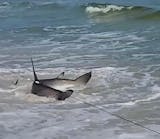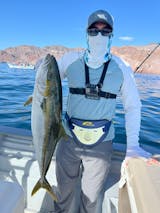
Jig fishing is a versatile and effective technique that every angler should have in their arsenal. Whether you're targeting bass, walleye, or panfish, jigs can be used in a variety of situations to attract and catch fish. In this post, we'll cover the essential tips and techniques for mastering jig fishing, helping you improve your catch rates and enjoy more success on the water.
Types of Jigs and Their Uses
There are several types of jigs, each designed for specific fishing scenarios:
- Flipping Jigs: Ideal for fishing in heavy cover such as weeds and brush.
- Finesse Jigs: Perfect for clear water and finicky fish that require a subtle presentation.
- Swim Jigs: Great for covering water quickly and targeting active fish.
Selecting the Right Jig
Choosing the right jig depends on several factors, including water conditions, target species, and fishing style. Here are some tips for selecting the best jig for your needs:
- Water Clarity: In clear water, opt for natural colors like green pumpkin or brown. In murky water, choose brighter colors like chartreuse or black and blue.
- Depth: Heavier jigs are better for deeper water, while lighter jigs work well in shallow areas.
- Cover: Use weedless jigs in heavy cover to reduce snags and increase your chances of catching fish.
Improving Jig Presentation
The way you present your jig underwater can make a big difference in your success. Here are some techniques to improve your jig presentation:
- Hopping: Lift your rod tip to make the jig hop off the bottom, then let it fall back down. This mimics the movement of a fleeing baitfish or crawfish.
- Dragging: Slowly drag the jig along the bottom to create a subtle, natural presentation.
- Swimming: Retrieve the jig steadily through the water column, imitating a swimming baitfish.
Tips for Increasing Catch Rates
To maximize your catch rates with jigs, consider the following tips:
- Use a Trailer: Adding a soft plastic trailer to your jig can enhance its action and make it more appealing to fish.
- Pay Attention to Detail: Make sure your jig's skirt is trimmed properly and your hook is sharp.
- Experiment with Colors and Sizes: Don't be afraid to try different colors and sizes of jigs to see what works best in your fishing environment.
Mastering jig fishing takes practice and patience, but the rewards are well worth the effort. By understanding the different types of jigs, selecting the right one for your needs, and perfecting your presentation, you can become a more effective and successful angler. So, grab your jigs and hit the water—there's no better time to start improving your jig fishing skills!







